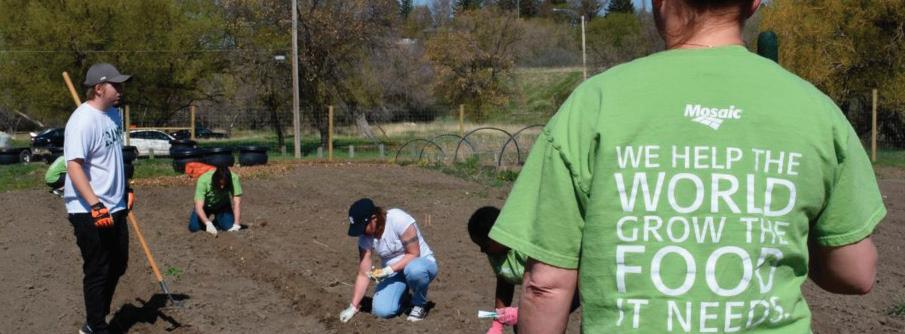Renamed TatawÂw Park Shows Long History of Moose Jaw’s River Valley
In the summer of 2019, community organizations finally cut the ribbon announcing the new name for the Moose Jaw Wild Animal Park, located south of the city on 9th Ave Southwest. The park’s renaming to Tatawâw Park, which in Cree means “welcome, there is room for everyone,” was an initiative put together by the Wakamow Aboriginal Community Association and the South Hill Community Association to recognize the land’s long history as a gathering place for many people.
The sign was unveiled by South Hill Community Association chair Crystal Froese (R) and Wakamow Aboriginal Community Association chair Lori Deets (L) in 2019.
Tatawâw Park is part of the Moose Jaw River Valley, which means it is located within Treaty 4 territory and the traditional lands of the Métis. Archaeological evidence covers nearly every part of the surrounding area. As explorers from the Hudson’s Bay Company began mapping the western frontier of Canada, they gave the Moose Jaw River plenty of names — Moose Jaw Forks, Moose Jaw Creek, Moose Jaw Bone Creek, and the Turn — and described many partnerships they built with the local Indigenous population. In the 1800s, the park was where Lakota Chief Black Bull settled with his band as early as 1883, following the historic defeat of General Custer at the Battle of the Little Bighorn — better known as Custer’s Last Stand. The Lakota lived in what is now
Tatawâw Park until the early 1910s, when the reservation at Wood Mountain was created and many moved there. Tatawâw Park was also home to
opened in 1929 and featured bears, bison, wolves, and eventually more exotic animals like lions. The Wild Animal Park was a
An image taken in what is now Tatawâw Park, featuring Lakota chief Black Bull (front) alongside a group of Moose Jaw military and other Lakota people in 1885.
This postcard shows the park entrance in the 1960s, with writing on the back that declares it a popular destination for Moose Jaw and district that attracts more than 80,000 visitors annually. (Moose Jaw Public Library Archives Department)
many other people, at this time. Before settlers came down the CP rail line in 1882 to settle and homestead what is now the city of Moose Jaw, many Métis people owned land in the area. An HBC servant named Xavier
The old bridges from the Wild Animal Park are still standing and can be walked across, but are blocked to vehicles for safety.
Denomie, of Métis heritage, offered lodging to travellers on the Moose Jaw River, and the first census in the settlement of Moose Jaw in 1884 recorded over 220 individuals of Métis heritage in the area. Photographs from the era suggest that as the settlement grew, Métis people began working as freighters with their Red River carts to deliver goods all over the countryside. Moose Jaw became a city in 1901, and the population then boomed. Over 500 acres of the Moose Jaw River Valley became the Wild Animal Park, which
19 2020 ExploreMooseJaw.com
beloved Moose Jaw destination for decades, with a postcard in the Moose Jaw Public Library Archives from the early 1960s boasting that the park saw 80,000 visitors annually. Financial roadblocks saw the
An image of three lions in the wire enclosure at the Moose Jaw Wild Animal Park, circa 1950s. (Moose Jaw Public Library Archives Department)
park close in 1995. The buildings and animal enclosures were removed, and people began using the land as walking trails. Now, the Wild Animal Park has become Tatawâw Park, as a nod to the land’s past as a home to numerous Aboriginal people but also as a message of welcoming for the community to continue enjoying the green space together.















































